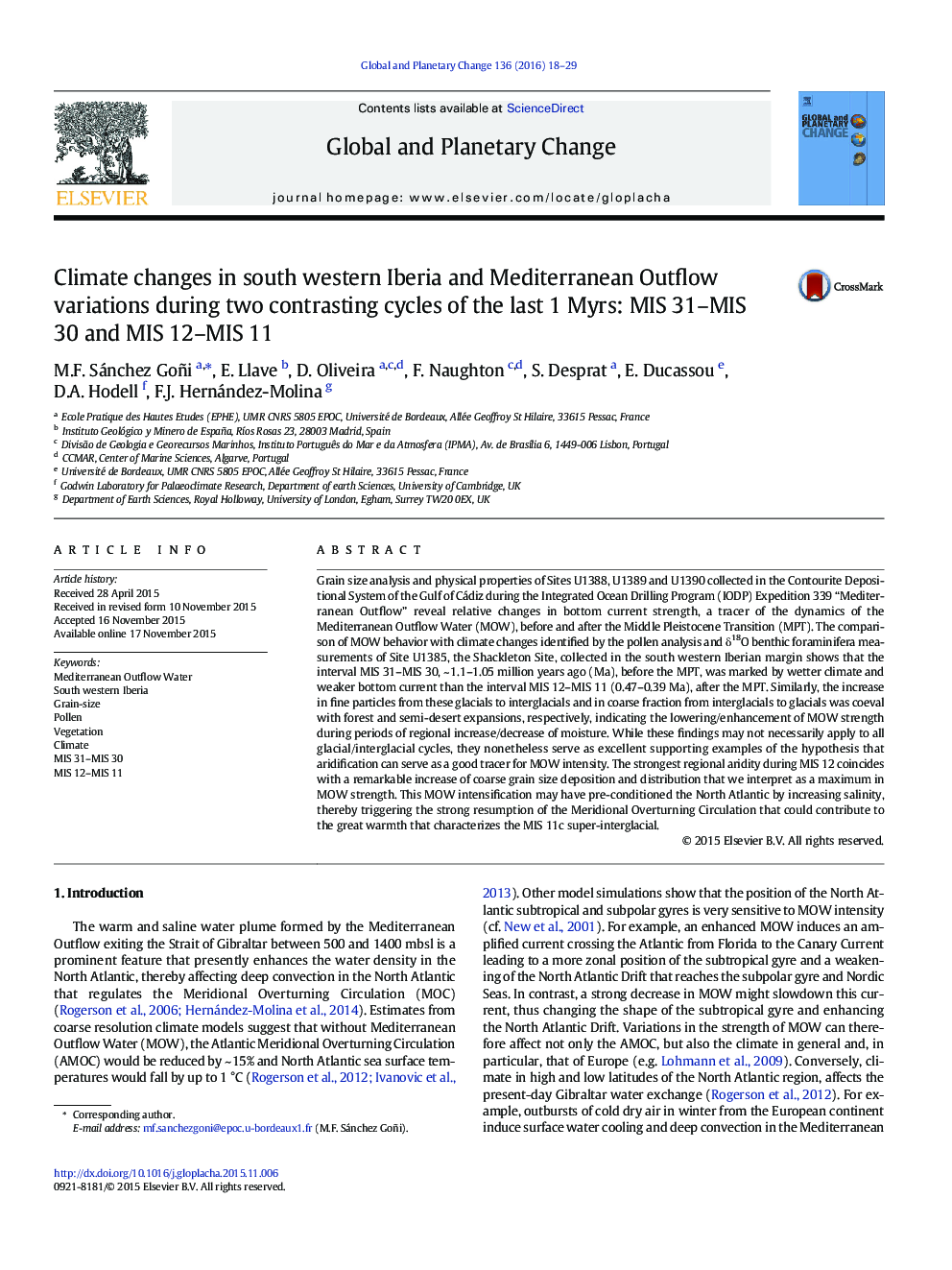| کد مقاله | کد نشریه | سال انتشار | مقاله انگلیسی | نسخه تمام متن |
|---|---|---|---|---|
| 6347931 | 1621646 | 2016 | 12 صفحه PDF | دانلود رایگان |
عنوان انگلیسی مقاله ISI
Climate changes in south western Iberia and Mediterranean Outflow variations during two contrasting cycles of the last 1Â Myrs: MIS 31-MIS 30 and MIS 12-MIS 11
دانلود مقاله + سفارش ترجمه
دانلود مقاله ISI انگلیسی
رایگان برای ایرانیان
کلمات کلیدی
موضوعات مرتبط
مهندسی و علوم پایه
علوم زمین و سیارات
فرآیندهای سطح زمین
پیش نمایش صفحه اول مقاله

چکیده انگلیسی
Grain size analysis and physical properties of Sites U1388, U1389 and U1390 collected in the Contourite Depositional System of the Gulf of Cádiz during the Integrated Ocean Drilling Program (IODP) Expedition 339 “Mediterranean Outflow” reveal relative changes in bottom current strength, a tracer of the dynamics of the Mediterranean Outflow Water (MOW), before and after the Middle Pleistocene Transition (MPT). The comparison of MOW behavior with climate changes identified by the pollen analysis and δ18O benthic foraminifera measurements of Site U1385, the Shackleton Site, collected in the south western Iberian margin shows that the interval MIS 31-MIS 30, ~ 1.1-1.05 million years ago (Ma), before the MPT, was marked by wetter climate and weaker bottom current than the interval MIS 12-MIS 11 (0.47-0.39 Ma), after the MPT. Similarly, the increase in fine particles from these glacials to interglacials and in coarse fraction from interglacials to glacials was coeval with forest and semi-desert expansions, respectively, indicating the lowering/enhancement of MOW strength during periods of regional increase/decrease of moisture. While these findings may not necessarily apply to all glacial/interglacial cycles, they nonetheless serve as excellent supporting examples of the hypothesis that aridification can serve as a good tracer for MOW intensity. The strongest regional aridity during MIS 12 coincides with a remarkable increase of coarse grain size deposition and distribution that we interpret as a maximum in MOW strength. This MOW intensification may have pre-conditioned the North Atlantic by increasing salinity, thereby triggering the strong resumption of the Meridional Overturning Circulation that could contribute to the great warmth that characterizes the MIS 11c super-interglacial.
ناشر
Database: Elsevier - ScienceDirect (ساینس دایرکت)
Journal: Global and Planetary Change - Volume 136, January 2016, Pages 18-29
Journal: Global and Planetary Change - Volume 136, January 2016, Pages 18-29
نویسندگان
M.F. Sánchez Goñi, E. Llave, D. Oliveira, F. Naughton, S. Desprat, E. Ducassou, D.A. Hodell, F.J. Hernández-Molina,